First, fast charging—the aspect consumers care about most—remains critical to the everyday practicality of electric vehicles. The ELF employs two distinct fast-charging systems: the MCS (Megawatt Charging System), originally developed for heavy-duty transport, and the CCS (Combined Charging System), the current passenger car standard. The MCS system enables megawatt-level charging performance and is mainly used to study the thermal and electrical limits of batteries and electronic components under extreme stress, feeding these insights into the development of long-range and commercial EVs. Meanwhile, the CCS system is tested for real-world passenger car use, with the ELF achieving a remarkable 900 kW charging output—enough to add 100 kWh of energy in just 10 minutes. This achievement brings charging times closer than ever to traditional refueling experiences. Research outcomes from ELF have also been directly applied to the CONCEPT AMG GT XX technology program, which can recharge enough energy for about 400 kilometers of range in five minutes, achieving a record-breaking peak charging power exceeding 1,000 kW.
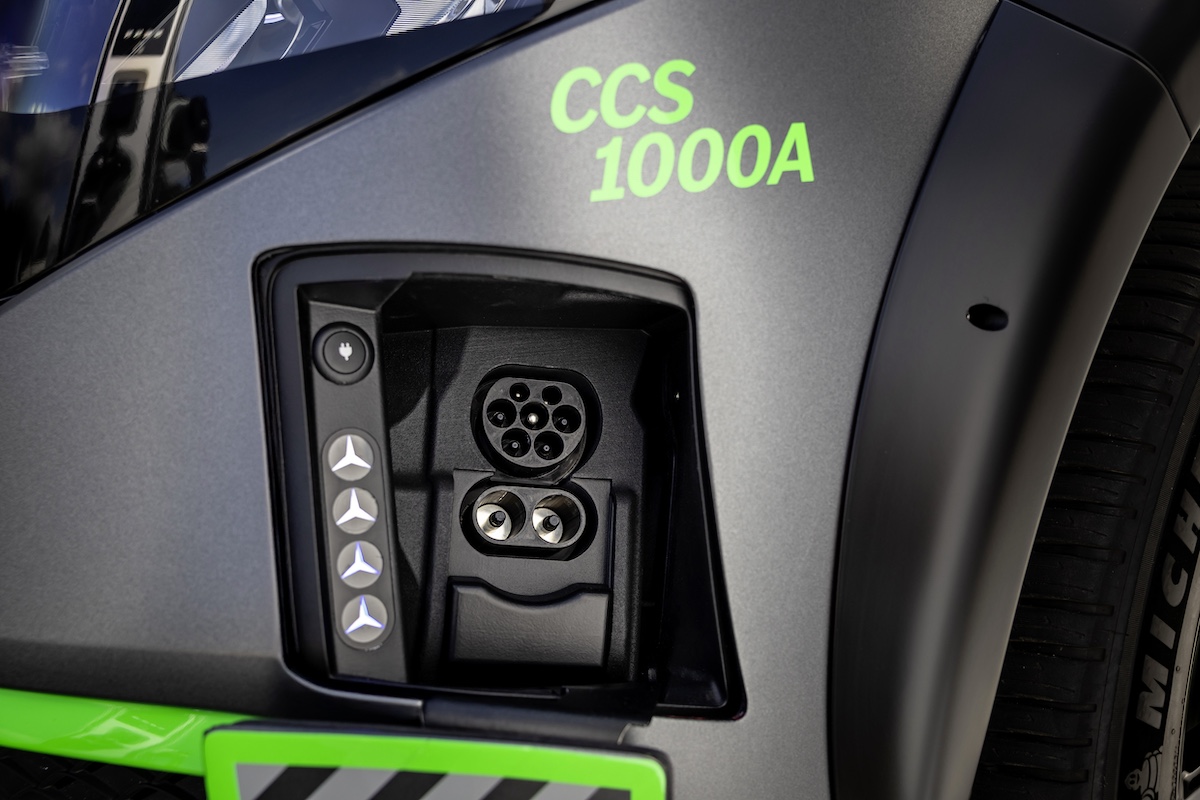
Second, bidirectional charging enables vehicles not only to charge but also to discharge energy back to homes (V2H), the grid (V2G), or devices (V2L). In other words, electric vehicles are no longer just endpoints of energy consumption but dynamic energy storage units. From a practical perspective, an EV equipped with a 70–100 kWh battery can power a typical household for two to four days during a blackout. Combined with solar panels, surplus daytime energy can be stored in the vehicle for nighttime use. For European users, this setup translates into an average annual energy cost saving of around €500 (approximately NT$17,684), equivalent to roughly 10,000 kilometers of free driving distance.
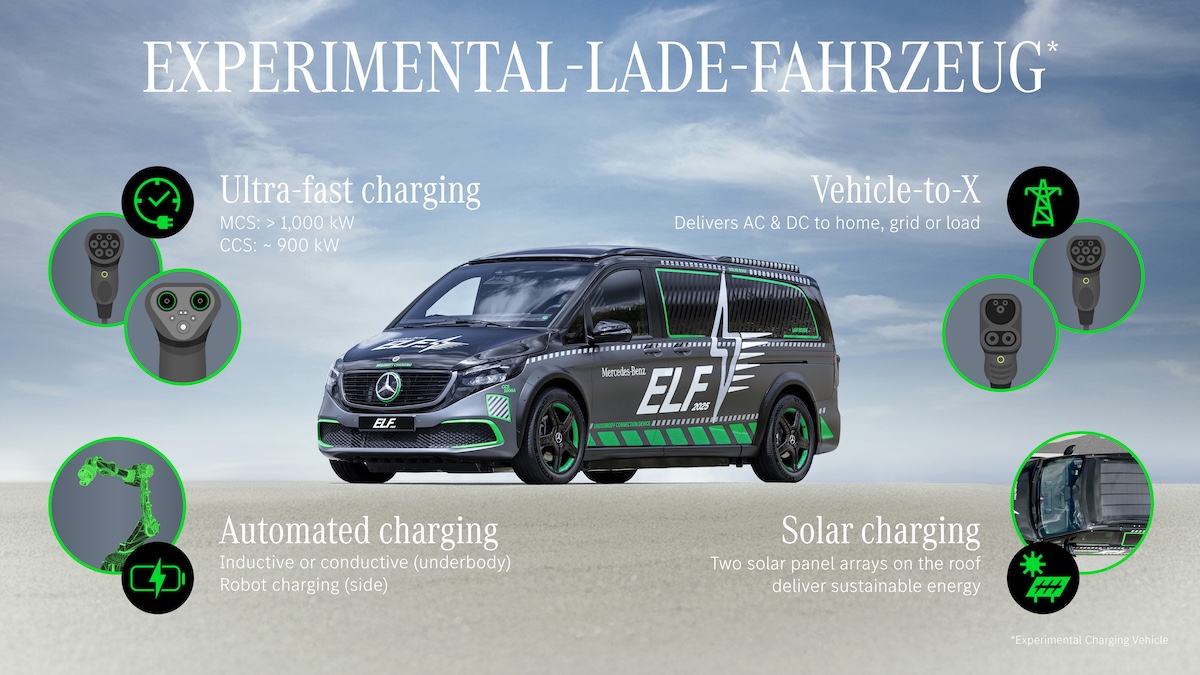
Third, the concept of a “virtual energy account” allows EV owners to record surplus solar energy generated at home as energy credits, which can later be redeemed for public charging. The technological foundation for this idea lies in Mercedes-Benz’s MB.CHARGE digital ecosystem, which integrates vehicle, cloud, and energy flow data to enable cross-location intelligent energy management. Should supportive regulations emerge—such as exemptions from grid fees for temporarily stored electricity—future EV owners could become active participants in the energy market rather than mere consumers.
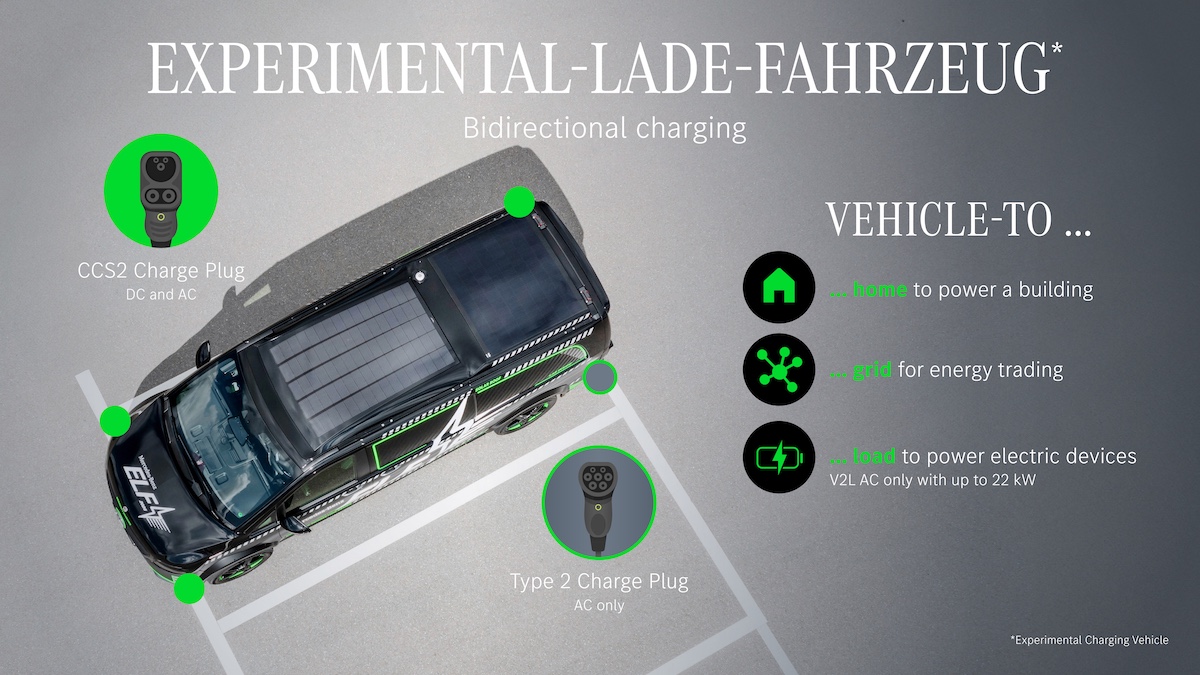
Fourth, ELF tests multiple plug-free charging technologies, including inductive and conductive charging. Inductive charging transfers power via magnetic resonance between ground coils and the vehicle, currently achieving 11 kW of AC charging power. This technology is especially attractive for regions with limited parking space or heightened safety needs, such as certain markets in Asia and Africa. Conductive underbody charging, on the other hand, connects the vehicle directly to a ground charging plate through an underfloor connector, also delivering 11 kW of power. Once aligned, the vehicle can automatically begin charging without manual intervention, reducing wear and safety risks. This approach is particularly suited for barrier-free environments and shared fleet operations. Both methods combine practicality with aesthetics, providing fresh inspiration for the design of future urban charging infrastructure.
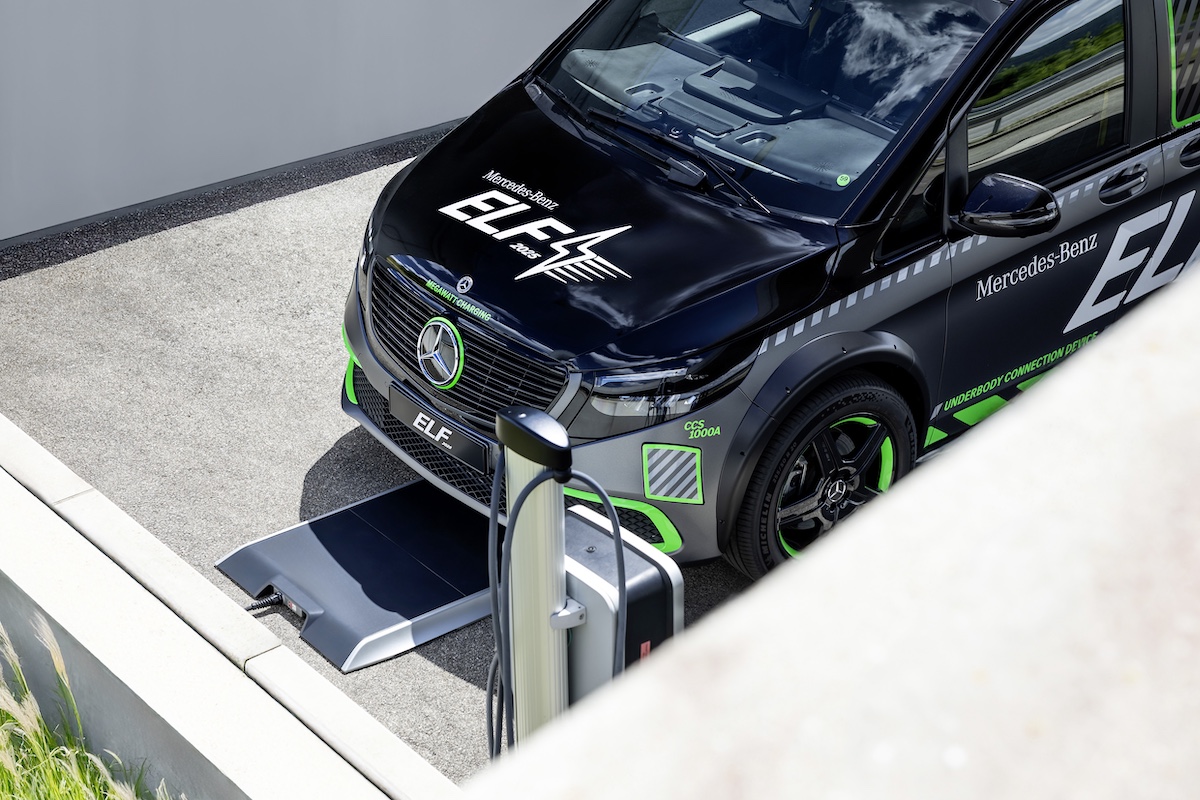
Fifth, as charging power continues to climb—making cables heavier and more complex to handle—Mercedes-Benz is simultaneously developing automated robotic charging systems that can precisely and safely connect vehicles to chargers without human involvement. This technology holds strong potential for fleet operations, autonomous driving, and premium market applications, enhancing both safety and user convenience.
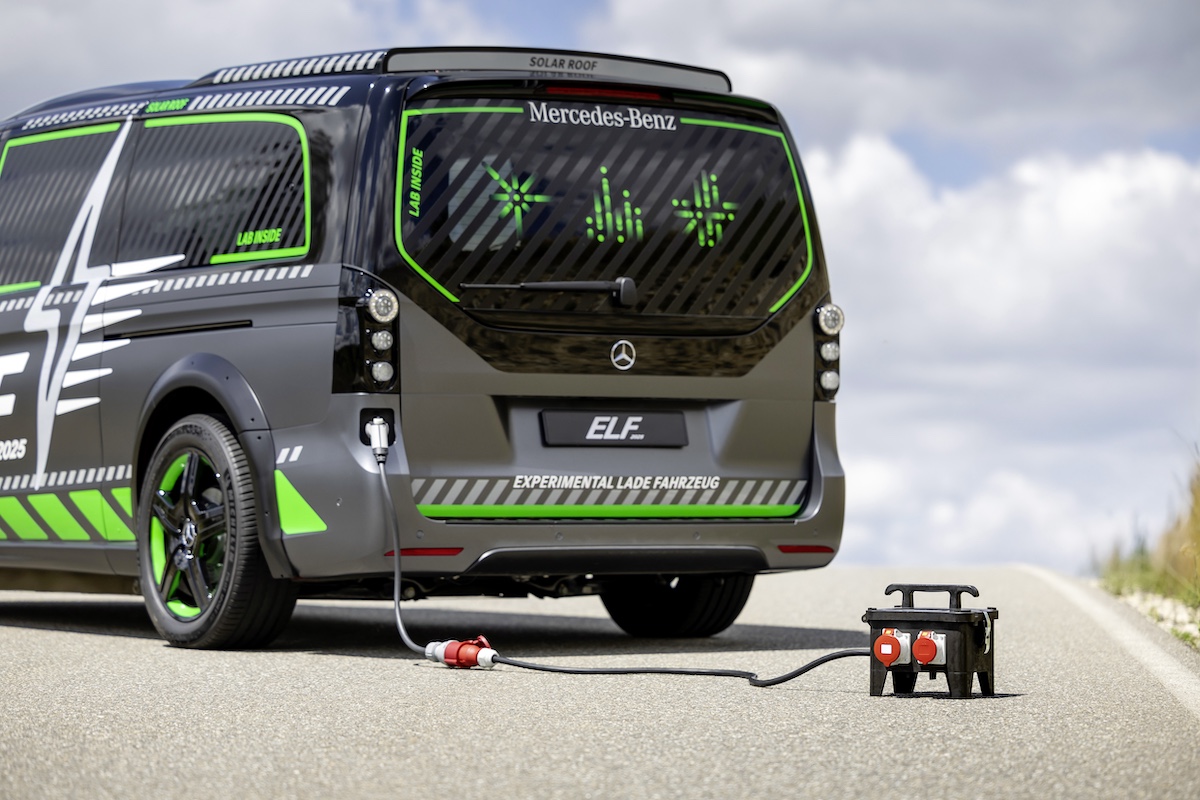
The creation of the ELF experimental charging vehicle marks a new phase in the evolution of traditional automakers’ EV research. Rather than focusing solely on extending range, the emphasis now shifts toward building a positive, interconnected cycle of energy generation, storage, transfer, and use—shaping the next-generation philosophy of electric mobility.